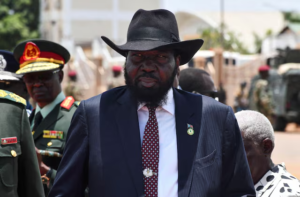A tentative wave of relief swept over Gaza and Israel on Thursday following the U.S.-facilitated ceasefire and hostage release deal announced, the first major breakthrough in a disastrous two-year war. The agreement, which was facilitated in the Egyptian seaside resort town of Sharm el-Sheikh, is the first move in a ambitious 20-point peace plan unveiled by President Donald Trump.

The news precipitated spontaneous jubilation among Palestinians and Israeli hostage families, providing a tenuous instant of hope after decades of violence. The agreement is to be officially signed at noon local time (0900 GMT).
Scenes of Jubilation and Cautious Relief
In Gaza, where the majority of people have been displaced by ruthless Israeli air raids, the news was greeted with emotional feelings. Crowds thronged the streets of Khan Younis, cheering and experiencing a sense of relief and hope.
“Thank God for the ceasefire, the cessation of killing and bloodshed,” said Abdul Majeed Abd Rabbo, who resides in the southern city. “I am not the only one to be joyful; all the Gaza Strip is joyful, all the Arab people, all the world is joyful with the ceasefire.”
In Tel Aviv, the mood was equally strained in the “Hostages Square,” focal point of an ongoing public campaign demanding the release of the hostages who were captured in the Hamas attack that began the war two years earlier. Einav Zaugauker, whose son, Matan, is among the hostages, was in tears.

“I can’t breathe, I can’t explain what I’m feeling. it’s crazy,” she said, bathed in the glow of a celebratory flare. “How do I say it to him? Hug and kiss him. Just tell him that I love him. It’s surreal—this is the relief.”

The Structure of the Deal and Questions Left Unanswered
The deal, which President Trump announced on his Truth Social platform, is the start of his administration’s peace plan. “I am particularly proud to be able to announce that Israel and Hamas both signed off on Phase One of our Peace Plan,” added Trump. “This is to say that ALL of the Hostages will be released very soon, and Israel will bring their Troops back to an agreed up line as the first steps towards a Strong, Durable, and Everlasting Peace.”
But the accord puts a number of important questions on the backburner. One senior Hamas official said that the deal includes a prisoner-hostage swap, without giving numbers. Most critically, the future government of Gaza and what becomes of Hamas’s military warehouses—a big Israeli demand—are not addressed at all and are deferred to later stages of the talks.
Political Ongoing Fractures Violence

The weakness of the pact was brought out both by immediate bloodshed and political opposition. While festive celebrations were initiated, residents testified to Israeli strikes overnight and into Thursday morning against Gaza City suburbs of Shejaia, Tuffah, and Zeitoun. Warnings were issued by the Israeli army concurrently against the return of Palestinians displaced from northern Gaza, which it still terms a “dangerous combat zone.”
Politically, Israeli Prime Minister Benjamin Netanyahu said the deal was a “diplomatic success and a national and moral victory for the State of Israel.” However, his governing coalition is under serious threat from within its far-right wing. Finance Minister Bezalel Smotrich came out strongly opposed, saying Hamas needed to be wiped out after the release of the hostages and stating he would not support the ceasefire.
A Daunting Path Forward
The conflict has been at a horrific cost. More than 67,000 Palestinians have perished in Israel’s military campaign that was sparked by the October 7, 2023, Hamas attack that claimed 1,200 Israeli lives and took 251 hostage. The conflict has also reshaped the Middle East map, with Israel fighting parallel wars against Hezbollah in Lebanon and Iranian targets.
While both Netanyahu and Trump have greeted each other with an “historic achievement,” the path to sustainable peace is fraught with obstacles. Trump’s subsequent step of the plan proposes an international body, led by the U.S. President and including former British Prime Minister Tony Blair, to oversee Gaza’s post-conflict administration. This proposal is already contentious; while Arab backing for the proposal rests on its leading to a Palestinian state, Netanyahu has repeatedly and categorically excluded that as an option.
For now, the truce offers a desperately needed respite. But the deeply entrenched positions on both sides suggest that the journey from a temporary ceasefire to the “eternal peace” of which Trump dreams is still long and uncertain.




